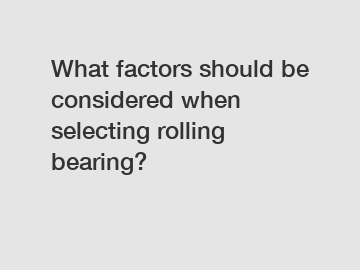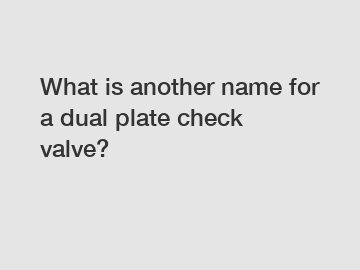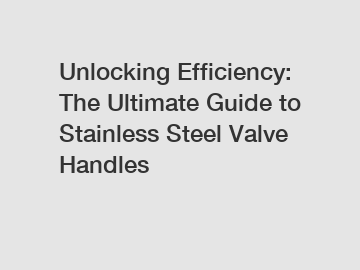Troubleshooting Bad Release Bearing Symptoms: Expert Guide to Saving Your Transmission!
Your vehicle's clutch system is an intricate mechanism responsible for smoothly transferring power from the engine to the transmission. Among its key components, the release bearing (also known as the throw-out bearing) plays a critical role in engaging and disengaging the clutch. However, like any other mechanical part, the release bearing can occasionally experience issues that result in disruptive symptoms. In this expert guide, we will provide a comprehensive overview of bad release bearing symptoms, their potential causes, and most importantly, troubleshooting tips to save your transmission from further damage.
1. Identifying Bad Release Bearing Symptoms.
The release bearing's primary function is to facilitate smooth and efficient clutch engagement and disengagement. When it begins to fail, several noticeable symptoms can indicate an underlying problem. Here are the most common signs of a bad release bearing:

a) Unusual Noises: One of the initial indicators of a failing release bearing is the presence of strange noises. You may hear a rattling or grinding sound when you engage or release the clutch pedal.
b) Excessive Vibration: A faulty release bearing can cause your clutch pedal to vibrate excessively, which indicates an imbalance or misalignment.
c) Difficulty Shifting Gears: Another common symptom is difficulty in smoothly shifting gears. You might experience grinding or resistance when attempting to change gears, especially when the clutch is being engaged or disengaged.
d) Clutch Slippage: A failing release bearing can lead to clutch slippage. You may notice that the engine revs higher even when the clutch pedal is fully engaged, which can result in decreased power transfer and diminished overall performance.
2. Potential Causes for Release Bearing Issues.
Understanding the possible causes behind release bearing problems is essential in accurately diagnosing and resolving the issue. Here are a few common culprits:
a) Wear and Tear: Over time, the release bearing's ball bearings, races, or lubricating grease can wear out, leading to various symptoms.
b) Lack of Lubrication: Inadequate lubrication can cause increased friction, resulting in premature release bearing failure.
c) Contaminants: Dust, dirt, or debris can find their way into the bearing assembly, causing it to become less effective or fail completely.
d) Improper Installation or Adjustment: An incorrectly installed or poorly adjusted release bearing can lead to premature failure and subsequent clutch problems.
Additional resources:What are the benefits of using a Volvo Diesel Engine?
Which industries benefit the most from Precision Investment Casting technology?
The Most Common Types of Hydraulic Valves
Safety Valve: The Quirky Secret to Stress-Free Living
Exploring the Top API 10D Gate Valve Exporters
Revolutionize Hydraulic Systems: Unveiling Precision Investment Casting's Game-Changing Benefits
How do you clean Airless Spray Pump Filters?
3. Troubleshooting Tips to Save Your Transmission.
If you suspect a bad release bearing, it's crucial to act promptly to prevent further damage to your transmission. Here are some expert troubleshooting tips to help you address the issue:
a) Inspection: Begin by inspecting the release bearing for any visible signs of damage, such as excessive play, wear, or contamination. Look for any leaking hydraulic fluid or damage to the clutch assembly.
b) Lubrication: Ensure that the release bearing is properly lubricated. Use a manufacturer-approved lubricant or grease to minimize friction and extend the bearing's lifespan.
c) Adjustment: If improper installation or adjustment is suspected, it may be necessary to carefully follow the vehicle's service manual and reposition the release bearing correctly.
d) Clutch System Servicing: If the release bearing issue persists or worsens, it's recommended to seek professional assistance from a knowledgeable mechanic. Their expertise can help identify underlying issues within the clutch system and prevent further damage to your transmission.
4. Prevention and Maintenance.
To avoid future release bearing problems, it's essential to adopt proactive maintenance practices:
a) Regular Inspections: Regularly inspect your clutch system, paying close attention to the release bearing's condition. Catching potential issues early can save you from costly repairs down the line.
b) Lubrication: Establish a routine lubrication schedule for your release bearing, ensuring it remains adequately greased for smoother function and prolonged lifespan.
c) Driving Habits: Avoid excessive clutch slipping and aggressive gear changes, as these can contribute to premature release bearing wear.
Conclusion.
Understanding the symptoms, causes, and troubleshooting strategies regarding a bad release bearing is crucial to preventing further damage to your transmission. By being proactive and addressing any issues promptly, you can ensure the smooth operation of your clutch system and enjoy a longer lifespan for your release bearing. However, should the problem persist, always consult a trusted automotive professional, as their expertise can provide effective solutions and preserve the integrity of your vehicle's transmission. Remember, a well-maintained release bearing is the key to clutch efficiency and a smooth driving experience!
For more information, please visit 62tb0629b29, 62tb0629b29, china A/C compressor bypass pulley.
Additional resources:What are the advantages of choosing the 6205 bearing with specific dimensions for a B2B purchase?
Which 3.2 Flux Core Wire Works Best for Welding Aluminum?
Top 5 Tips for Making a Wise bh2077h Purchase?
Which Tricks Enhance the Durability of Deep Groove Ball Bearings?
Which NBR Rubber Oil Seal Grades are Best for Extreme Temperatures?
Which is best CNC lathe machine?
What is cylindrical roller bearings?
Related Articles









Comments
0